[ad_1]
English is the world’s most studied language.
Nevertheless, English-speaking companies continue building bilingual and multilingual websites. Why? Globalization. Lingoda, an online language learning platform, reports that about 15% of the world’s total population speaks English. This means a huge chunk of the market is still waiting to be discovered.
In this article, we will learn how to build a multilingual website with a web content management system (WCMS) and maximize opportunities in the ever-growing market.
What is a multilingual website?
A multilingual website presents content in more than one language, allowing more people to access the same information. It helps expand the brand reach by catering to a wider audience and targeting consumers in the local lingo.
Benefits of a multilingual website
Do you want to expand to newer markets? Does your target audience speak more than one language? Do you want to build authority over your competitors? If your answer is yes to any of those questions, it’s high time you consider making your website multilingual. And, if you are on the fence about making this decision, here’s why you need to have your website in different languages.
- Expand customer base: According to a global survey by CSA, 66% of consumers would pay more for a localized product. Whether a local or global business, incorporating multiple languages in your website can help expand your customer base, even in the same country.
- Build engagement: Multilingual websites can help bolster engagement with prospects who don’t converse in the same language as you. Multi-lingual visitors are usually “high-intent prospects” who hesitate to express their thoughts. Preferred language options allow them to share their concerns, express queries, and proceed in the right purchase direction.
- Rule SEO: Going multilingual is the ultimate way for achieving international search engine optimization (SEO) standards for your website. Besides catering to different buyer personas across the globe, you are simplifying your brand message for everyone. Multilingual websites affect your page ranks in a positive way, thereby increasing visibility.
- Word of mouth: Imagine if your prospect gets personalized assistance in their language from start to end. How do you think they’d feel? Satisfied and happy. A diverse and multi-lingual brand experience can increase word-of-mouth marketing and put your brand in the spotlight.
- Increase sales: It is no rocket science to understand that diversity, empathy, and inclusion are key factors to a brand’s success. Providing a comfortable space to everyone, not just your consumers, can speak volumes about your value proposition and drive immense sales growth.
- Familiarization: The moment you prompt a local user to select their own preferred language, you spike their initial interest. Going multilingual can distinguish you from other brands in terms of content delivery. Mainly because you chose to familiarize your product with your consumers in a way that comforts them.
- Set a competitive benchmark: With a multilingual website and proper SEO efforts, you can show up on local search engines, tap into new markets and expand your businesses. Because your website features content in more than one language, you will gain an edge over your unilateral, product-fixated competitors that aren’t doing much on the consumer front.
Challenges of a multilingual website
There are multiple benefits to making your website multilingual, but like everything worthwhile, it has its share of challenges.
- Costly and time-consuming: Accurately translating an entire website into another language is laborious, especially if there’s a lot of content. Not only is it time-taking, but you must also find a qualified translator fluent in the target language. Someone who understands the content and context of your website and can translate it accurately.
- Inconsistency and maintenance issues: Maintaining consistency in information, design, and layout across all versions is imperative when creating a multilingual website. You also want to ensure that any website updates or changes reflect in all the editions.
- Error in localization: Besides literal translation, localization is essential to capturing a language’s essence. It involves factoring the cultural, linguistic, and regional differences. For example, reversing the layout to Right-to-Left when translating the website to Arabic. Other considerations include images, currency, measuring units, and date format.
- Low search engine visibility: SEO for multilingual websites can be difficult as it requires optimizing the content for various languages and locations. To achieve high visibility in the search engine results pages (SERPs), you must do thorough keyword research and ensure that the translated content is appropriately indexed and localized for users’ queries.
- Substandard user experience: Careful planning helps you provide a seamless user experience, allowing them to navigate easily through your website. Without such planning, you leave yourself open to substandard user experience. A multilingual website should have an intuitive and user-friendly interface. It should provide clear language selection options, load quickly, and be mobile-friendly.
How to build a multilingual website
Are you ready to start tapping into the multilingual market? Use this guide to help you get started.
1. Define your expansion goals
The first step is to decide which languages you will add to your website. The choice will depend on your geographic appetite (and audience), budget, and resources.
To update the site regularly, you will need people with a strong command of the desired language. Finding the right resources might be challenging—especially in our English-centric world where every other ad screams, “Improve English online.”
So, before building a multilingual website, answer these questions:
- Do you want to aim at a specific country or need to translate your website without specific regional targeting?
- Is there a market for your products? If so, can you compete on price, quality of service, and brand name?
- How many languages are you able to budget?
2. Choose your domain strategy
You can build a multilingual website in two ways: a subdomain approach or a separate domain approach. That means you can either have a single website domain with other-language linked pages or use separate domains to host the multilingual versions of your content.
Both approaches have advantages and disadvantages. The subdomain approach is affordable—you won’t need to pay for dozens of URLs and domains—but it has a much higher risk of broken links. A separate domain approach is faster to set up and less risky in terms of bugs but much pricier.
3. Choose the right software
The next step is to pick a CMS—a content management system to help you create and manage digital content for your multi- or bilingual website.
Two commonly used CMSs are WordPress and Joomla. Both are self-hosted, open-source CMSs that have been around for more than ten years.
The first has great extensibility, a huge support community, and relatively low development costs. The second has more advanced user management and flexibility for displaying non-standard content types.
But if we’re talking about building multilingual sites, you need to know that Joomla has inbuilt multilingual options. Meanwhile, WordPress requires installing a plugin. You’ll want to check that your content management system serves your multilingual needs and budget.
4. Pick a plugin
If you choose a CMS that requires a plugin for multilingual content, you’ll need to pick a website translation tool before moving on. Fortunately, many options exist, such as Weglot, GlobalLink, and Smartling.
While many of these tools will help you translate your content automatically without the help of translation services, some provide options for manual translation as well.
One thing to keep in mind while selecting a CMS tool is that it should be compatible with the WCMS your website is built on.
5. Translate
The biggest misconception about building a multilingual website is that installing a plugin automatically translates all the content, but that is only partially true.
Yes, the tools mentioned above will allow virtually any content on a website to be translated, but they can only help with the literal translation.
Do not rely solely on automatic translation tools and services. Has your content been translated or at least checked by a real person? Even though it is not the most practical solution, hiring a group of freelance translators is the way to go. Human translators can analyze language from an emotional and contextual point of view, giving your text a more accurate translation.
6. Choose a place for the language selection menu
As with any website, functionality and overall user experience (UX) must be at the core of every decision you make. So one of your essential tasks is to choose how users will select a language on your site.
One of the smartest and most effective ways to offer language selection options is in a conveniently-placed drop-down menu.
Usually, these menus are located in the top-right corner of the homepage. That is the most universally recognized and obvious place to put them—users will instinctively take a glance there.
Alternatively, depending on the design and your personal preferences, you could add a list of languages to choose from in your website’s header, footer, or sidebar.
7. Design the language selection menu
Once you’ve chosen a place for your menu, you can start thinking about its appearance.
First of all, you have to list out all the languages that you’re going to offer your users. Then, you should consider how you will list them on the menu and what order to follow.
Companies typically approach this in two ways: by using flags or text. We advise you to stick with a text-based option. Flags do not stand for languages; they represent countries.
The same language can be spoken in different countries—French in Canada or Spanish in Mexico—so using flags in a language selection menu may confuse some users.
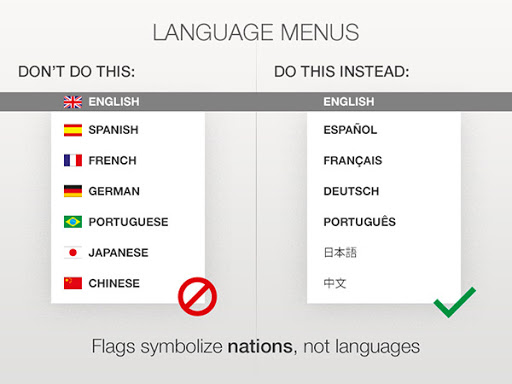
8. Optimize
Multilingual and bilingual websites need extra attention when it comes to SEO. A proper structure, language tags, and schema hacks for multiple locations will bring you the maximum number of visits from search engines.
Multilingual website best practices
- Translate URLs
- Research long-tail keywords in different languages
- Use only high-quality translations
- Translate meta descriptions
- Use href lang tags
- Use plugins with robust multilingual SEO
9. Check your typography
Typography is a vital detail that is easy to neglect when you’re busy with design.
This includes the font and layout that you will use in your content. While a hand-written font may look great for English text, you must check how readable it will be when translated to Russian or more complex languages like Mandarin or Farsi.
Always check your content to ensure readability in all the languages you provide for your users. As a rule of thumb, when setting up a multilingual website, use Unicode, a platform that can encode characters from more than 90 languages.
Along with readability, you also need to check the format and alignment of your multilingual text. While aligning your content on the left may seem normal, it may cause problems for some people because they read from right to left. Because of this, you will sometimes need to flip or mirror the page.
10. Localize
A multilingual website is not just about translating words correctly. If you create a multilingual e-commerce website, do not forget currency switches and marketing sensitivities in various countries.
Localizing your website also involves accurately translating a language as it is spoken in different regions. Different versions are available based on location, even if a language is spoken worldwide.
For instance, Dualoo, a Swiss company that operates in Switzerland, Germany, and Austria (all German-speaking countries), had to localize its website because there are a lot of different words for the same notion in each country.
Users expect a warm welcome on your website—otherwise, they will be gone as soon as they arrive. So, getting the language straight and localizing for each country will minimize your bounce rate and improve SEO.
Multilingual website examples
Now that you understand the benefits of a multi-language website and the process of creating one, let’s check some examples of brands that ventured beyond the language barrier and captured a huge chunk of the market in their domain.
1. Apple
Apple is a well-known multinational technology brand with a global presence. Its website is available in multiple languages with remarkable brand consistency in all localized versions. Apple’s voice assistant Siri supports 21 languages to cater to its diverse customer base. The website allows viewing location-specific content by choosing language and region when logging in. It takes the multi-language support further by incorporating English, French, and Mandarin variants.
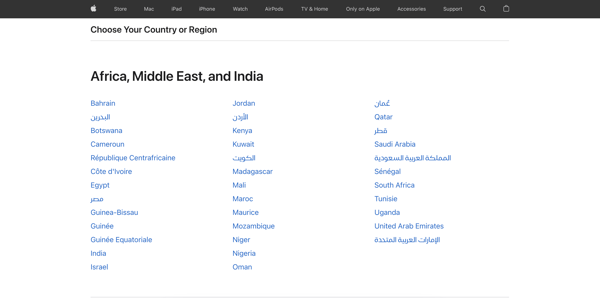 Source: Apple
Source: Apple
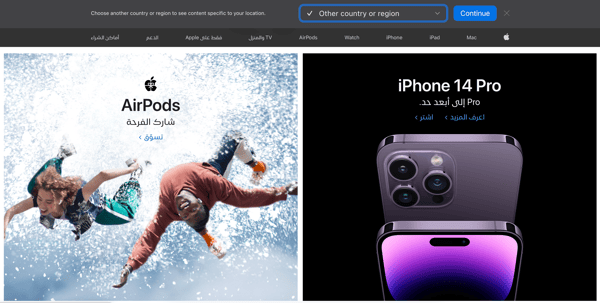 Source: Apple
Source: Apple
2. Nike
Nike is another multinational corporation globally appreciated for its footwear, apparel, equipment, and accessories. The website allows users to choose their preferred language by selecting the desired location from the footer. Languages supported by Nike’s website are Portuguese, Spanish, French, and Italian, among others. Notice how the content changes according to the location when switched from the US to France.
 Source: Nike
Source: Nike
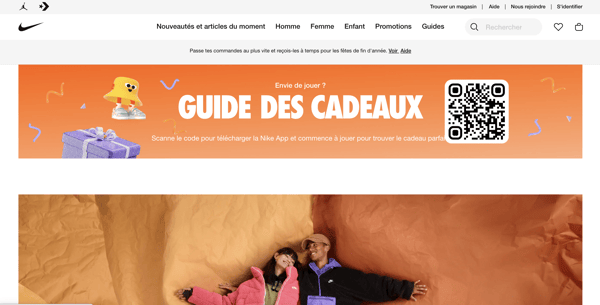 Source: Nike
Source: Nike
3. Ikea
Ikea is a renowned Swedish retailer known for its stylish and affordable home furnishing. The website supports languages such as Japanese, Chinese, Russian and Italian, along with multiple language support in the same country. Once the language is selected, the entire website is automatically translated, allowing users to access the same content and features as the English version.
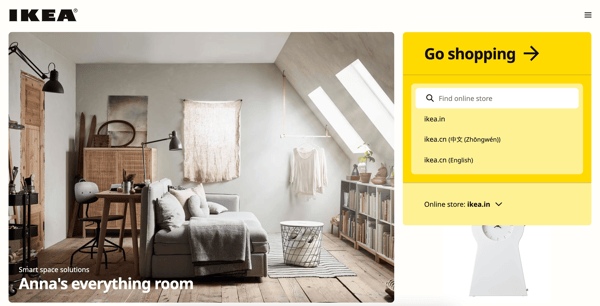 Source: Ikea
Source: Ikea
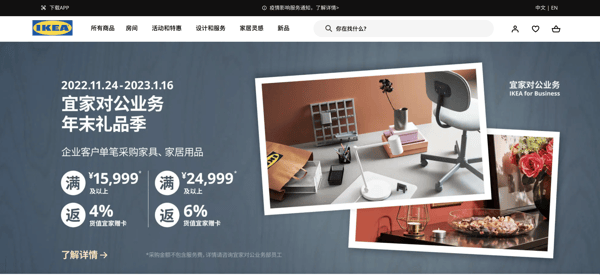 Source: Ikea
Source: Ikea
En conclusión
As you can see, building a successful multilingual website is no piece of the cake. You need to handle a lot of tools and process a ton of information to provide your users with the best multilingual experience possible. But it will surely pay off if you dedicate time, have patience, and remain persistent.
Now that you are ready to go global, you want to ensure you get your content in front of an audience. Optimize your content by using SEO software and capture the undiscovered market.
[ad_2]
Source link









